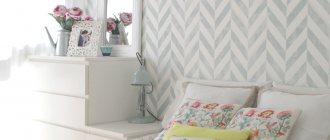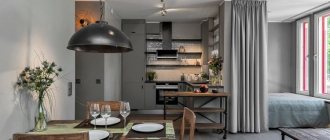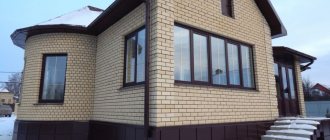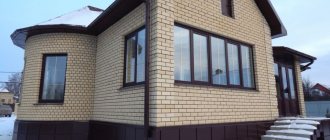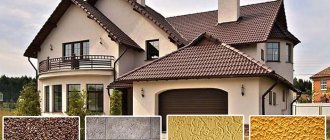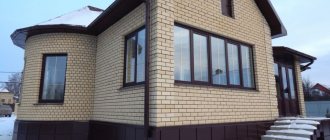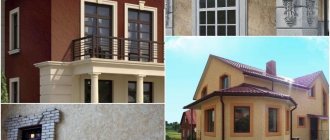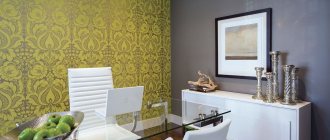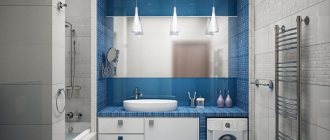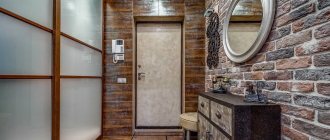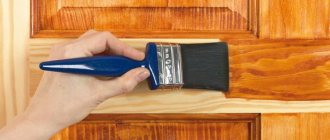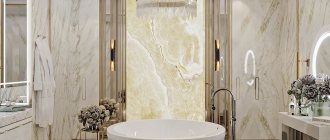28.02.2021
,
A fresco in the interior of modern apartments is a real work of art that serves as an unusual decoration and demonstrates the delicate taste of the owners. Artistic wall painting has long been present in royal palaces, ancient temples and medieval basilicas. Each painting was made by hand by masters using special technology. The wall paintings created a majestic atmosphere. Epochs have changed, new building materials have appeared, but frescoes are still as popular.
The latest technologies make it possible to decorate the walls and ceilings of city apartments and country cottages with exquisite paintings. Such finishing is not always an expensive and time-consuming service. It is only important to choose a suitable topic and location. How to use frescoes in the interior so that they look elegant and not tasteless?
Design features
Fresco is a technique of painting on wet or dry plaster using paints and brushes. In the Middle Ages and the Renaissance, the method of painting only on wet plaster was used, which, after drying, formed a film, which made the fresco durable. Today, a fresco in the interior is called any wall painting using paints, brushes and an airbrush, which makes installation work easier.
In a modern interior you can find a fresco in different techniques and with different patterns, which can be applied not only to plaster, but also to another base. This design option is suitable for a classic interior, where all the canons of decoration and furniture are observed, as well as for modern design.
Modern technologies
Today, new types of finishing and technologies make it possible to produce frescoes without significant costs. Nowadays, they are available not only to kings and influential nobles - they can be seen in the interior of the bedroom or living room of an ordinary apartment. It is not even necessary to use the services of a master, since you can always find various imitations of frescoes on sale. They fit organically into the interior, and sometimes allow you to adjust the space or divide it into separate zones. Eco-friendly materials are used to make luxury jewelry. The subject of the drawing can be anything - from architectural buildings to abstraction.
Types of frescoes
Today it is not necessary to invite an artist to paint the walls; it is enough to order a modern fresco, which contains only natural ingredients, such as sand mixture, lime, paints, and adhesive mixture. The drawing can be made from a photo or sketch. There is a large selection of frescoes for the interior, such as: on plaster, on non-woven fabric, on canvas, on self-adhesive and on a rigid basis.
The photo shows an interior with a thematic fresco from the life of the Middle Ages, which occupies two walls of a spacious dining room in a classical style.
Plaster based
A wall fresco based on plaster is suitable for a classic interior. The technique is close to creating ancient frescoes. It is made of plaster based on a mounting mesh. The drawing is applied with paints. It is attached to the wall or ceiling with glue, the edges are decorated with plaster, so the design looks like it has been molded into the wall.
Painting on non-woven fabric
Painting on non-woven fabric is done using a photo wallpaper printer. After applying a drawing or photo, the image is aged. It can be applied to slightly uneven walls using non-woven photo wallpaper technology. Such a fresco can be made on an entire wall with a landscape of distant Venice or Paris.
Fresco on canvas
This type is very popular. Plaster is applied to the canvas, then drawing. After this, the artificial aging method and wax coating are applied. It can be made from an exclusive photo, or be standard, framed or without. A fresco without a frame can be glued to the wall using wallpaper glue. Dust must be removed only using a dry method.
The photo shows a fresco that, in composition with arches, creates an imitation of an open balcony. For such an interior, the walls should be neutral in color.
Self-adhesive
The self-adhesive fresco is produced using digital technology. Sand is applied to the finished photo of the required size on the front side and self-adhesive film on the other. Such a fresco can be glued to a worn and degreased surface of the ceiling or wall. The wallpaper is similar to the photo and, due to its thin thickness, does not hide the defect in the walls.
On a rigid basis
Painting is done on a rigid base, which is limited in size (maximum parameter 3x1.5 meters). Printed on a hard prepared board, it can be framed in the interior, or simply glued to the wall.
Flexible plaster fresco
A very popular type of fresco. Thanks to natural dyes, it is very similar to the classical form in beauty and technology. For its production, a special elastic plaster is used.
It takes a very long time to dry and harden, which increases the working time significantly. It is so convenient that people who have at least some skills in finishing and drawing make them themselves.
Application of the finished fresco and location
An elastic fresco, which is similar to photo wallpaper, is attached with glue and looks organically with the wall; the version on a rigid base will have protrusions like a painting.
Algorithm for applying the canvas:
- Carry out preparatory work to level the surface of the wall, it should be smooth, take measurements of the fresco and surface.
- Apply glue for non-woven photo wallpaper to the wall and the back of the painting, which will then become soft, so it is important not to break it.
- Glue and remove bubbles from under the canvas. The irregularities will go away after drying.
Wall location
Like photo wallpaper, frescoes in interiors are most often used for wall decoration. Its size can be of any format and shape, from square to ellipse. In a large room it can occupy the entire wall.
Ceiling location
In order to decorate the ceiling, you can use painting together with stucco molding made of plaster or polyurethane. The ceiling should be high so that it does not “press” the pattern on the walls.
As decoration
As decoration, you can decorate ledges, niches, columns. You can decorate frescoes in the interior using frames and moldings.
The photo shows a fresco with a reproduction of Michelangelo’s painting “The Creation of Adam”, which decorates the niche above the stairs. This option is suitable for a classic interior.
How to make a fresco on the wall with your own hands
The classic method includes the following steps:
- Using plaster, for example from KNAUF-Rotband, it is necessary to level the surface of the wall.
- Next, small depressions and irregularities are sealed with finishing putty.
- The wall is primed white.
- A sketch of the intended design is drawn on the wall with colored chalk or stylus. To make things easier, you can use a projector. In another method, the drawing is printed on an A4 sheet and divided into cells. The wall is also lined, and then the transfer occurs onto it.
- The sketch is painted with acrylic paints.
- If necessary, aging is carried out.
- At the last stage, the design is covered with varnish or decorating wax.
When using wax as a finishing coat, the wall can no longer be washed with water.
When using wax as a finishing coat, the wall can no longer be washed with water.
Nowadays, it is no longer necessary to have special artistic skills to independently make repairs with a fresco on the wall. On the Internet there are various imitating techniques for every taste and budget. And with the help of digital printing, you can decorate the wall with the image you like so that it turns out to be of the highest class. The fresco will wonderfully decorate the interior and add special individuality and charm.
Features of application in styles
When choosing the size of the fresco and its theme, you need to start from the size of the room, the arrangement of furniture and the style solution.
Modern
For a modern interior, a fresco with abstraction, geometry, and simple patterns with color transitions is suitable. Subject images are also suitable, especially for children.
Classical
For classics, reproductions of world masterpieces of painting, images of flowers, and still life are suitable. The color scheme remains neutral. Of all types of painting, they are suitable on canvas, on plaster, or on a rigid base. In a classic interior, white or gold frames play an important role, so you can use them.
In the photo, a fresco based on plaster in pastel shades depicting the natural ensemble of the castle looks unobtrusive and gentle in a light classic interior.
Provence
Provence style can be emphasized with the help of a colored fresco with pastel flowers or a lavender field. A large image requires a separate wall that will not be cluttered with furniture. The fresco will become the accent of the entire room, so it is important not to overload the interior with additional decorative elements.
What are the differences between a fresco and a photo wallpaper?
The same motifs are often chosen as the source image for frescoes and photo wallpapers: beautiful flowers, Venetian streets, courtyards, and arches. They are applied to decorative coatings using digital interior printing, but on different substrates.
Vinyl material is often used for photo wallpaper. But it is susceptible to fungus and in rare cases can cause allergies. Therefore, in Europe they increasingly give preference to frescoes on a natural basis.
In terms of density, this decorative coating is significantly superior to photo wallpaper. Thanks to this, it lasts much longer. This justifies the difference in price. Another advantage of frescoes is the absence of an unpleasant chemical smell. The fresco on the wall does not contain seams. In addition, if the surface becomes dirty, it can be easily washed with water.
It is for this number of reasons that many people are increasingly choosing a fresco instead of the usual photo wallpaper.
In terms of density, this decorative coating is significantly superior to photo wallpaper.
Combination with other materials
Finishing materials that work well with painting include plaster, matte paint, wallpaper, and stone. Venetian plaster together with the image looks harmonious and natural in the interior. Decorative plaster (liquid wallpaper) is also suitable. When gluing non-woven wallpaper, you need to use high-quality glue. It is better that the wallpaper is without ornament or large pattern.
What is photo wallpaper?
Photo wallpaper is a material for decorating walls in the form of canvas or strips. These are environmentally friendly products that are safe for human health and the environment.
The following materials are used in the production process:
- Non-woven fabric coated with PVC of various textures. The products are distinguished by their bright colors and clear lines. Some types of coating can be washed and are resistant to mechanical stress. Others cannot be washed, and their resistance to damage is low.
- Vinyl is highly resistant to wear and mechanical damage and can be washed. Gluing requires experience.
- The fabric base or textiles (polyester) are highly resistant to damage and can be washed.
- Self-adhesive film that can be glued to smooth surfaces - wood, plastic, glass, metal and others. Easy to wipe and clean.
Photo wallpaper can be smooth or with a certain surface texture (relief). Two forms are offered - seamless, when the image is applied to a single canvas or separate stripes. The width of the stripes varies from 103 to 148 cm.
The advantages of the products include:
- high brightness of colors and clarity of images;
- ease of gluing;
- excellent aesthetic characteristics.
Photo wallpaper
Texture of the canvas
Choice of design and image
A pattern can be used to divide a room into zones or create an accent. You need to choose the theme of the image based on the style of the room. For a classic interior, you can use famous paintings, stylized portraits from photos, historical panoramas, flowers, the face of a saint. You can also make an iconostasis from frescoes. For the ceiling, a picture of the sky with clouds, flying birds or angels is suitable.
In the photo, the image of the sky and the stucco edging on the ceiling create an imitation of a window and make the interior airy. This design is suitable for low or dark rooms.
In a modern interior, abstract paintings are suitable, where the emphasis is on shape and color. Also popular are images simulating the view from a window or balcony of a city panorama or the beach. The pattern of branches and flowers can be in both pastel and bright shades.
Frequently used images
Here everything is largely decided by the environment. Frescoes are often recreations of popular paintings. Such reproductions are usually placed over the entire surface of the wall.
If we talk about classical images, then something from ancient or religious themes is taken. In ancient premises, paintings depicting the life of people in a certain era can be recreated.
- If the choice fell on abstraction, then the chosen shade plays a significant role.
- The drawing is done using a stencil, which means the work will cost less.
- If the room is rather gloomy, you can paint a pattern of flowers on the wall.
- An excellent option would be a picture with a blooming garden. This solution will be excellent if the windows face north.
If the room has low ceilings, close-up pictures of flowers will help to visually expand the space. Another good option is landscapes. They can refresh the interior and make it more free. It is recommended to depict wildlife, beaches and meadows.
A famous person can be depicted on the surface of the wall. It could be a dancer, musician or actor - the most important thing is that his portrait fits the room.
If you choose the right picture for the fresco, the design of the room will turn out great. It will bring grace to the interior, making it more interesting and attractive.
Decor of the premises in the apartment
Kitchen
For the interior of the kitchen and dining room, still life, imitation of the view from the window, fruit, and flower arrangements are suitable. To create an emphasis on the dining area, you can use a view of the forest, mountains, or waterfall.
In the photo, the fresco on the stone accent wall of the kitchen looks organic due to the successful selection of the pattern and good artificial lighting.
Living room
In the interior of the living room you can use a picture with a plot, a photo of the old city, or your portrait. In a classic living room, frames would be appropriate, and in a country style, stone edging would be appropriate. The color scheme should match the overall concept of the room.
Bedroom
For the bedroom interior, a picture of clouds on the ceiling, angels, flowers in pastel shades, seascapes that will help you relax is suitable. It is inappropriate to depict people or subjects here due to cumbersomeness.
In the photo, the wall at the head of the bed in a classic-style bedroom is decorated with paintings on non-woven fabric and white false polyurethane columns. The contrast with the color of the walls blends harmoniously into the interior.
Hallway
For a narrow hallway you need to use a light fresco along the wall. To decorate a corridor without a window, an image of an open window with a view of nature is suitable.
Children's
In the interior of a children's room, the painting should be understandable to the child. This could be the plot of a fairy tale, a cartoon character. It is best for the fresco to be opposite the bed so that the baby can look at it before going to bed.
Options for placing frescoes in the interior of different rooms
To choose the most suitable fresco, you need to start from the style in which the room is decorated.
Kitchen
Although the fresco is stronger than just photo wallpaper, you still shouldn’t expose it to extreme conditions by placing it near a sink or stove. The most optimal location is the dining area.
When choosing an image, you need to follow the rule that nothing should distract from eating. Most often, motifs with fruits, still lifes or flowers are chosen for frescoes.
For a small kitchen, images with perspective are suitable. For example, a narrow path among an endless field or forest. Or it could be the spreading sea. It wouldn’t hurt to complement the finished decor with an artificial window. The main thing is that the decorative element itself, the kitchen set and the decoration are in good harmony together.
The most optimal location is the dining area.
Living room (hall)
In this part of the apartment the decor will look most appropriate. The room is an indicator of the status and artistic taste of the owner. As for the location, designers advise decorating the largest free wall with natural images.
For a classic interior, a reproduction of a famous painting or your own portrait is suitable.
The room is an indicator of the status and artistic taste of the owner.
Bedroom
A fresco on a bedroom wall should not be in bright, flashy colors. This resting place should be dominated by calm, light shades. The main task of the decor is to set the mood for relaxation and give the necessary moments of calm.
They are often placed at the head of the bed. And picturesque landscapes and flowers are often chosen as drawings. The ceiling depicts a blue sky with serenely floating clouds.
This resting place should be dominated by calm, light shades.
Hallway
Most often, this room is the darkest and narrowest corner in the apartment. But this is exactly what a guest sees when entering the apartment.
Therefore, frescoes in this place are used to visually expand the space. To do this, you should choose light images.
If there are small black fragments in the image, then it’s okay. The main thing is that pastel and light colors predominate.
Frescoes in this place are used to visually expand the space.
Wallpaper frescoes for the kitchen: choose a pattern
Such wallpaper will fit perfectly into a kitchen space, which should be warm and cozy. Since the kitchen usually has not only high humidity, but also constant stains from cooking, such wall coverings are ideal.
Wallpaper frescoes with a landscape will be an excellent choice for the kitchen: pictures of nature can whet the appetite
When decorating a dining room, you need to remember that the wallpaper frescoes do not discourage the owners and their guests, therefore, an excellent solution would be to choose warm colors and patterns with various dishes, fruits or aromatic herbs. If your kitchen is in Provence style, we recommend using landscapes with a lavender field or images of cafe facades.
Wallpaper for fresco: high-quality imitation
Initially, fresco was understood as painting on wet plaster; today this name implies any form of wall painting. Mural wallpaper is no exception and is a high-quality large-format print. Such wallpaper can have relief or, conversely, be flat.
It is quite difficult to distinguish fresco-like wallpaper from the original, since most of such wallpapers are made with high quality: the manufacturer tries to do everything so that the wallpaper itself is no different from the fresco
There is another option for fresco wallpaper - these are images on plaster with a flexible texture, which are additionally covered with a protective layer. Although such wall coverings cannot exactly be called wallpaper, they are in no way inferior to the classic fabric, paper and non-woven options.
Wallpaper with a fresco effect is perceived as very fashionable and stylish. They will enliven your home, add luxury and comfort, and can also visually deepen or expand the space of the room. Properly selected wallpaper for the fresco will be in harmonious combination with your decoration.
What wallpaper to choose for the fresco: the ideal wallpaper
When choosing wallpaper for a fresco, the image can be completely different from complex portrait compositions to simple abstractions or landscapes. First of all, decide in which room you want to use the fresco. If the room is large, then the selection of colors will be easier, since it is easier to place a beautiful large fresco in such rooms. And if the room has disproportionate dimensions, then you need to choose such an image so that it helps expand the narrow space, and gives the existing low ceilings an airiness in the form of a sky pattern, decorated with delicate airy clouds and branches of climbing bushes. A fresco can benefit the entire interior as a whole, even creating illusions of various kinds.
In small rooms you should not use frescoes with large images
The sizes of the frescoes can also be very different, as well as the drawings on them. The canvases range from minimal to maximal sizes, onto which a pattern is applied and, if necessary, glued together so that they are seamless.
You can also decorate the facade of the building with fashionable frescoes, then the plaster must be of the highest quality so that weather conditions cannot spoil the art.
